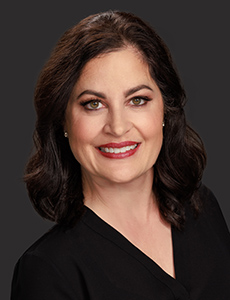As Floods Rage and Wildfires Roar, Insurers Embrace Evolutionary Ideas To Address Climate Catastrophe

Industry experts convened at the recent Insurtech Insights Europe event in London, held March 1-2, 2023.
One panel of note met to discuss novel ways to address the climate catastrophe.
This session tackled the topic of balancing the needs of the risk and insurance industry with innovative solutions designed to address the climate change problem from various angles.
Susan Winkler, VP and executive drector of Connecticut Insurance and Financial Services, moderated the session. Winkler was joined on stage by Natalia Dorfman, CEO and co-founder of Kita; Tony Buckle, partner at UWX and former chief underwriting officer at Allianz Global Corporate & Specialty; and Nyasha Kuwana, head of product at FloodFlash.
Here’s what the panelists had to say.
Climate Catastrophe Combined With Other Stressors Changes Risks
The climate catastrophe contributes to changing risks and increased volatility of weather-related events.
Buckle spoke about how risks that weren’t previously significant are now becoming more volatile.
“Magnitude and frequency are the typical dimensions insurers employ to assess volatility. Climate change is not only exacerbating the magnitude and frequency of major perils such as tropical storms, it is bringing to the fore exposures that insurers considered secondary or even tertiary concerns,” he said.
“Wildfire is the oft-quoted example. Extreme-intensity rainfall is becoming a significant concern, as it combines with human modification of the landscape to exacerbate flash flooding losses. We have seen such events the world over, with recent examples across Europe, Australia as well as the U.S. (e.g., California).”
Combined with the changing volatility of weather-related events are other man-made factors that contribute to higher loss severity.
Kuwana expanded on how these factors are impacting the frequency and severity of flood events: “Urbanization, population growth and climate change are contributing to a higher frequency in floods and their severity.
“Each year, there are more than $70 billion in losses as a result of floods. If we go by the recent California floods, more than 80% of those losses are uninsured. So, flood, with only quake in the same order of magnitude, presents a large opportunity for insurers,” Kuwana explained.
There is a protection gap in coverage that exists in many parts of the world, which also stresses communities, governments and individuals when catastrophic weather events strike.
The panelists largely agreed more education about insurance products — and greater availability of affordable products — could help reduce this gap.
“In large part, the insurance industry has not risen to the challenge particularly when it comes to catastrophe insurance where uncertainty grows,” said Kuwana.
“This in turn leads to restricted underwriting or high premiums which means that affordable insurance is not always available to customers with the desirable profitability for the insurers. On the other hand, there is an education gap that means businesses and individuals are not fully aware of their current and growing flood risk or the need to be insured.”
Solutions Designed to Address Climate Catastrophe
The industry is now producing innovative solutions designed to help address the climate catastrophe from various angles.
Kita, a carbon insurer focused on de-risking carbon removal solutions to accelerate their ability to scale, is approaching the problem by reducing the risks companies face with the delivery of carbon credits.
With its tailored insurance products to guarantee the quality and delivery of carbon units and carbon removal solutions, Kita is uniquely solving carbon delivery risks.
Dorfman spoke further about how Kita is managing risks inherent in carbon removal solutions.
As she explained it, “data is essential for developing risk models that drive innovation in the insurance industry. This is particularly important for Kita and our carbon insurance products designed to reduce the risks of carbon removal.
“Uncertainties in the delivery of carbon credits arise from new carbon removal solutions, natural hazards, complex methodologies, and changing policies,” Dorfman continued. “Kita employs a diverse and broad range of data in models that estimate the probability and severity of carbon credit under-delivery.”
She went on to clarify how data models are improving the success of their risk management solutions.
“The accuracy of these models is crucial to Kita’s success and our fiduciary responsibility to the insurance institutions whose capital underwrites our policies. The outcome is providing a stamp of confidence that is essential in scaling financial investment into high-quality carbon removal solutions, which is essential to fight the climate crisis,” said Dorfman.
A different type of solution than Kita, FloodFlash is a parametric flood insurance product that uses sensors installed at an insured location to measure flooding, which triggers the policy to pay a predetermined amount if the trigger is met — in this case, if the flooding rises to an agreed-upon level measured by the proprietary sensors.
FloodFlash employs a detect and prevent model combined with a parametric policy to provide an almost-instant claims payment after a loss.
Using onsite sensors, FloodFlash is notified when a qualifying event occurs. This means a quick payout to affected policyholders when combined with an agreed value policy.
This speedy payment means policyholders have access to cash almost immediately after a flood loss, allowing them to continue business as usual.
“This senor data enables fast claims payment in days and not in months or even years providing much needed liquidity to businesses, our customer,” explained Kuwana.
“In the U.S., 40% of small businesses never re-open their doors following a flooding disaster, and 90% fail within two years. So paying claims slowly poses an existential threat to business, the communities they work for and those who work for them. FloodFlash is protecting more U.S. businesses and livelihoods when catastrophe strikes.”
Other solutions are available in the market, too.
Some Insurtechs provide satellite imagery to help improve underwriting decisions while others write software to help companies with regulatory and fiduciary climate disclosures.
Another parametric startup writes a policy for cargo and supply chain delays using blockchain to house its transactions.
With these new tools and innovations available in the marketplace, we can anticipate new risks and exposures for the industry to manage.
Preparing for the unpredictable is what the risk and insurance industry does best, but the magnitude of the climate change catastrophe is unmatched. More solutions like these are needed and insurers must continue their efforts to focus on addressing the climate crisis. &












